- Home / Catalog / Facial Equipment / Skin Analysis Machines / Wood's Lamp
Wood's lamp
Nothing found
Wood's Lamp for Skin Analysis
If you have heard about Wood's Lamp, you might wonder what it is and what it's used for. Don't worry; you are not alone in this one. So, what exactly is Wood's Lamp, and what are its applications? Find out here.
What is Wood's Lamp?
Wood's Lamp is a low-output mercury arc examination tool that uses light to detect fungal or bacterial infections. It is also used to detect various skin pigmentation irregularities such as Vitiligo and if you have a scratch on your eye's surface, also known as corneal abrasion.
The first Wood's Lamp was invented in 1903 by a physicist named Robert W. Wood hence its name. Old versions of these are covered by a wood filter made with 9% nickel oxide and barium silicate. It emits a wavelength around 320 to 450 nm.
Modern versions of Wood's Lamp are made with mercury vapor lamps, BLB fluorescent, incandescent lamps, and light-emitting diodes.
Apart from being used as a diagnostic tool, Wood's Lamp can also be used for the following purposes:
- Molecular Biology
There are instances when molecular biology laboratories use Wood's Lamp to detect compounds that have fluorescent tags. It is also used in Biochemistry labs when looking for evidence of Porphyria in urine, red blood cells, and stool.
- Veterinary
Veterinarians use Wood Lamps to reveal the presence of parasitic, fungal, and bacterial infections in animals.
- Nightclubs
In the past few years, many nightclubs have been plagued by guests who don't pay for re-entry. Their solution to this is using ink stamps that, even if its erased, will still show up under the Wood's Lamp,
- Bank Check
Counterfeit money has become so good that it looks very similar to real money. This is why most banknotes use markings that are not seen by human eyes and are difficult to replicate. However, they can be confirmed using Wood's Lamp, which reveals the special marks indicating real money.
How Does Wood's Lamp Work?
The examination involves the use of a handheld device which is what's referred to as the Wood's Lamp. This device has a black light that illuminates parts of the skin that have issues.
The light is put over a particular area of the skin in a dark room. It causes the parts that have the presence of fungi and bacteria to change in color. The same thing happens on the part of the skin which is affected by irregular pigmentation.
For corneal abrasion examination, doctors administer fluorescein solution on the eye. Once that's in, they will put the Wood's Lamp over it. If there are any scratches or abrasions, the light will glow on those areas.
Normal healthy skin will not illuminate under the light of the Wood's Lamp. However, doctors might get abnormal or inconclusive results for the test if the patient:
- Washed their skin prior to the test
- The room is not as dark as it should be
- There are other things on the skin that glows under the light of the Wood's Lamp. These items include soap, make-up, deodorant, and sometimes, even lints.
Using Wood's Lamp as a diagnostic test does not involve any pain. However, it is best to avoid directly looking at the ultraviolet light that it limits. This is because it might damage the eye, but only if you stare at it for a long duration. It is also not suggested for patients that have severe photosensitivity because they might develop rashes.
Wood's Lamp For Esthetician
It's not common to see Wood's Lamp on estheticians or beauty shops since it's not a necessary tool for giving a facial. However, some spas and estheticians use it to show customers the signs of aging and other skin imperfections.
Moreover, estheticians can use Wood's Lamp to determine which areas of the face require more effort. At the same time, they could also suggest better-suited treatments for the condition of the client.
Wood's Lamp For Dermatology
It's common for you to see a dermatologist using Wood's Lamp because it helps them better assess the condition of the skin. At the same time, it is also a good diagnostic tool for various skin conditions such as Erythrasma and Vitiligo.
Wood's Lamp Examination
The Wood's Lamp examination requires the patient to be inside a dark room, usually a dermatologist's office. The dermatologist will then turn on the device and hold it 5 inches away from the skin. The color changes that occur under the light will tell the dermatologist about your skin condition.
Wood's Lamp Color Chart
When the skin is placed under a Wood's Lamp light, a number of colors will appear. These colors have indications that allow estheticians and dermatologists to diagnose several skin conditions.
Wood's Lamp Skin Analysis Colors
These are the corresponding meaning of the colors that appear under the Wood's Lamp:
- Blue-white
A Blue-white hue will appear on healthy, normal skin.
- White
The white part of the skin under the black light indicates dead cells.
- Purple Fluorescent
Areas that appear with purple fluorescent huge shows that that part of the skin does not have enough moisture.
- Brown
The brown part of the skin under the Wood's Lamp will reveal dark spots and pigmentation issues.
- Light Violet
Skin areas that illuminate light violet indicate that the skin is dehydrated.
- Bright Fluorescent
In contrast with parts that have light violet hues, skin areas that appear to be bright fluorescent indicate hydrated skin.
- Yellow or Pinkish
Parts of the skin that are yellow or pinkish in color under the Wood's Lamp means that there are comedones and oils.
- White Fluorescence
Areas that appear to be white fluorescence means that it has a thick corneum layer.
What Skin Conditions Does a Wood's Lamp Reveal
As mentioned, the primary purpose of the Wood's Lamp is to diagnose skin conditions or its overall health. With this in mind, here are some of the conditions that the Wood's Lamp can reveal:
Wood's Lamp for Vitiligo
Vitiligo is a type of skin disease. The most notable symptom of this condition is when the patches of skin lose their color. This usually happens in parts of the skin where melanin ceased to function or died.
A Wood's Lamp examination can help reveal this condition among people with light skin. The parts of the skin affected by Vitiligo can look either yellow-green or bright blue-white under the black light. They also have sharper borders, further indicating the presence of the condition.
Wood's Lamp for Erythrasma
Erythrasma is a chronic infection of the skin. This is caused by the excess presence of Corynebacterium minutissimum, which normal human beings have. Under the Wood's Lamp light, bacterial infections like these appear to be bright green.
Wood's Lamp for Fungus
Fungus refers to a spore-producing organism that feeds on organic matter. There are plenty of skin conditions caused by fungal infections. This includes athlete's foot, Onychomycosis, Cutaneous candidiasis, and many more.
One way of diagnosing the existence of fungal infection on the skin is with the use of Wood's Lamp. The part of the skin with fungus looks yellow-green or bright blue under the black light.
Wood's Lamp for Melasma
This is a skin condition where patches of brown appear on the skin. These patches are usually on the face, but they can also develop on the neck and forearms. Melasma can appear dark brown with sharp borders under the light of a Wood's Lamp.
This is not a serious condition, and it's quite common as well. However, severe cases can affect a person's appearance, resulting in lower self-confidence.
Wood's Lamp for Tinea Capitis
Tinea Capitis is a fungal infection of the scalp. It causes bald hair patches and severe itchiness, which can affect a person's overall comfort. This condition can also present on eyelashes and eyebrows.
The Wood's Lamp can illuminate the process of fungus causing Tinea Capitis. This can help in diagnosing the condition, allowing doctors to prescribe the right medicines.
Wood's Lamp for Microsporum
Microsporum is a type of fungi that can cause ringworm. If you are not familiar with what ringworm is, it's a skin and nail infection caused by fungus. Its most notable symptoms include a dark itchy rash that is usually circular in shape.
Ringworm can be determined using the Wood's Lamp because the fungus will illuminate and glow. This makes it easier for doctors to pinpoint the areas that are affected by ringworms.
Wood's Lamp for Hyperpigmentation
Wood's Lamp can also be used to determine the presence of other pigmentation conditions aside from Vitiligo. It can also be used to determine hyperpigmentation which is a condition when the skin has more melanin than it should have.
Areas with hyperpigmentation will be made apparent using backlight since they will appear to have sharper borders. They also tend to be able to absorb more light because of the amount of melanin on it.
Wood's Lamp for Head Lice
Head lice are parasitic insects that live on the human scalp. They can also be found on eyelashes and eyebrows. Not only do these things cause itchiness, but they can also be the cause of disease spread.
Head lice are usually difficult to detect because they hide well under the hairs. In some cases, they can be mistaken for a hair cast or dried hairspray. But, with the use of Wood's Lamps, its presence can be confirmed so that necessary treatment can be given.
Wood's Lamp for Pityrosporum Folliculitis
Pityrosporum Folliculitis is a hair follicle infection caused by yeast. It normally appears on the chest area or upper back. Sometimes, this is mistaken as acne, making it quite challenging to diagnose. But, it can be confirmed using a Wood's Lamp because it will appear yellow-green under a black light.
Wood's Lamp for Porphyria
Porphyria refers to 8 inherited disorders that affect the nervous system and the skin. Those who have this condition are sensitive to sunlight. They also have blisters and abrasions on their skin.
This condition can be detected using the Wood's Lamp. Under its light, the part affected by Porphyria will appear red-pink in color.
Benefits of Wood's Lamp Device for Your Business
Are you wondering whether you should have a Wood's Lamp device in your business? In that case, the following benefits might convince you to get it:
Better Assessment
Suppose you are running a spa business that offers facial services. Including a quick Wood's Lamp test will allow your esthetician to better refer to the most suitable treatment for the client. At the same time, doing this can also prevent mishaps where clients have more irritated skin because the treatment done on them is not compatible with the needs of their skin.
Shows Before and After Results to Client
Another benefit of a Wood's Lamp test is that it allows you to show the before and after skin condition to the clients. This is an excellent and solid way to prove that the facial you provide improves the skin's overall condition.
- Added Precision
The beauty of using a Wood's Lamp is that it tells you exactly where the problem areas are. As a result, you can precisely treat that area without affecting the healthy parts of the skin.
For example, a client has plenty of dehydrated areas based on what's shown by the Wood Lamp. By knowing this, you can focus the treatment specifically on those parts to get the best results possible.
Final Thoughts
When it comes to skin conditions, it is vital to have it properly diagnosed and treated immediately before it gets worse. If this is not done, there can be lasting effects on the person's health. Even if it does not affect their health, their self-confidence might go down.
Unfortunately, some skin conditions cannot be diagnosed with just a quick look at the skin. This is where Wood's Lamp can help. Wood's Lamp is a pretty nifty device. When you look at it, it's just a handheld device that emits light. However, the amount of information that it provides is pretty extensive, making it an excellent diagnostic tool.


















Connecticut, Delaware, Florida, Georgia, Hawaii, Idaho, Illinois, Indiana, Iowa, Kansas, Kentucky, Louisiana, Maine, Maryland, Massachusetts, Michigan, Minnesota, Mississippi, Missouri, Montana, Nebraska, Nevada, New Hampshire, New Jersey, New Mexico, New York, North Carolina, North Dakota, Ohio, Oklahoma, Oregon, Pennsylvania, Rhode Island, South Carolina, South Dakota, Tennessee, Texas, Utah, Vermont, Virginia, Washington, West Virginia, Wisconsin, Wyoming















